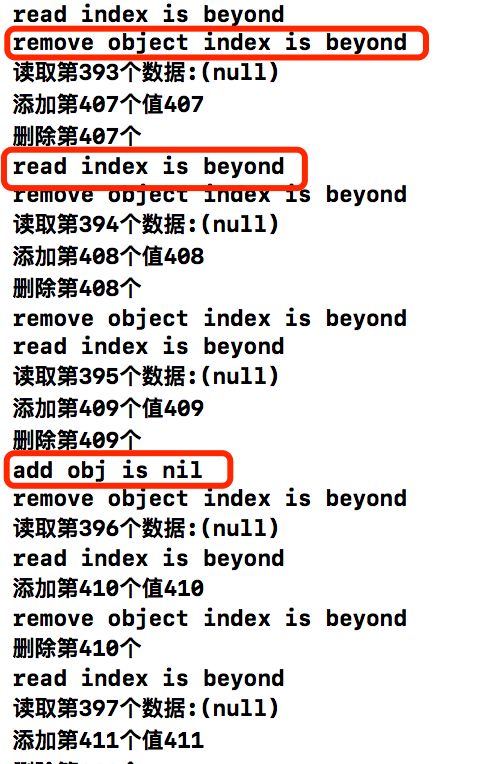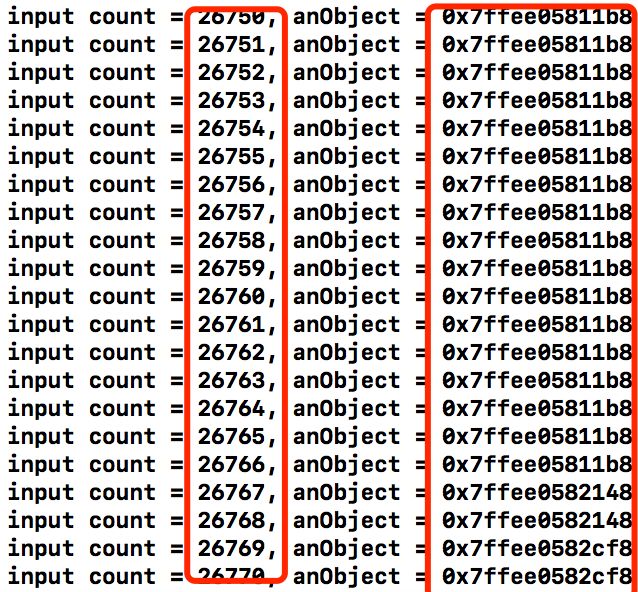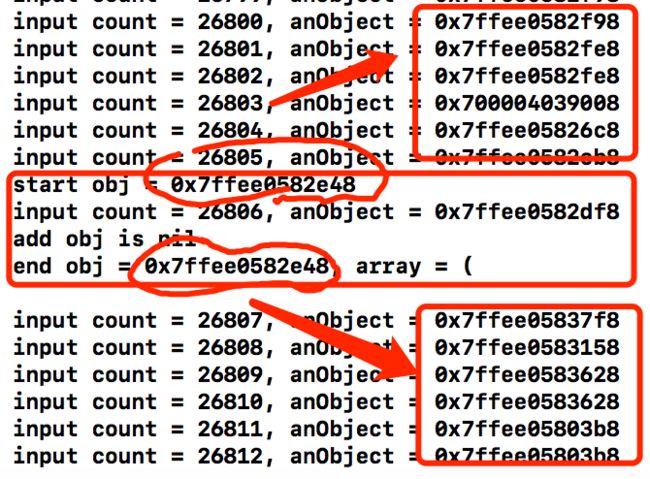导读
当对一个可变数组操作很频繁,并且在多个线程操作同一个可变数组时,发生数组越界等奔溃是很常见的.所以使用runtime,对其方法进行交换.然后在交换方法中对增,删,改,查等做保护机制就可以避免类似情况发生.
源代码
1.新建一个NSMutableArray的分类
NSMutableArray+ SafeAccess.h文件声明
#import
@interface NSMutableArray (SafeAccess)
@end
2.文件实现
// 需要导入runtime.h文件
#import
然后在load方法中声明进行方法交换声明
+ (void)load {
static dispatch_once_t onceToken;
dispatch_once(&onceToken, ^{
id obj = [[self alloc] init];
[obj swizzleMethod:@selector(addObject:) withMethod:@selector(safeAddObject:)];
[obj swizzleMethod:@selector(objectAtIndex:) withMethod:@selector(safeObjectAtIndex:)];
[obj swizzleMethod:@selector(removeObjectAtIndex:) withMethod:@selector(safeRemoveObjectAtIndex:)];
});
}
- (void)swizzleMethod:(SEL)origSelector withMethod:(SEL)newSelector {
Class cls = [self class];
Method originalMethod = class_getInstanceMethod(cls, origSelector);
Method swizzledMethod = class_getInstanceMethod(cls, newSelector);
BOOL didAddMethod = class_addMethod(cls,
origSelector,
method_getImplementation(swizzledMethod),
method_getTypeEncoding(swizzledMethod));
if (didAddMethod) {
class_replaceMethod(cls,
newSelector,
method_getImplementation(originalMethod),
method_getTypeEncoding(originalMethod));
} else {
method_exchangeImplementations(originalMethod, swizzledMethod);
}
}
为什么在load方法中进行声明?
可以参考iOS开发+(void)load与+(void)initialize区别,里面做了很详细的介绍.
三个交换方法的实现
- (void)safeAddObject:(id)anObject {
if (anObject) {
[self safeAddObject:anObject];
}else{
NSLog(@"obj is nil");
}
}
- (id)safeObjectAtIndex:(NSInteger)index {
if(index<[self count]){
return [self safeObjectAtIndex:index];
}else{
NSLog(@"index is beyond bounds ");
}
return nil;
}
- (void)safeRemoveObjectAtIndex:(NSUInteger)index {
if (index >= [self count]) {
return;
}
return [self safeRemoveObjectAtIndex:index];
}
3.测试用例
- (void)syncMutableArray {
NSMutableArray *safeArr = [[NSMutableArray alloc] init];
dispatch_queue_t queue = dispatch_get_global_queue(DISPATCH_QUEUE_PRIORITY_DEFAULT, 0);
for ( int i = 0; i < 1000; i ++) {
dispatch_async(queue, ^{
NSString *obj = [NSString stringWithFormat:@"%d",i];
if (i % 9 == 0) {
obj = nil;
}
NSLog(@"添加第%d个值%@",i,obj);
[safeArr addObject:obj];
});
dispatch_async(queue, ^{
NSLog(@"删除第%d个",i);
[safeArr removeObjectAtIndex:i];
});
dispatch_async(queue, ^{
NSLog(@"读取第%d个数据:%@",i,[safeArr objectAtIndex:i]);
});
}
}
运行结果如下:
1.gif
通过运行结果可知,当插入元素为空,删除元素索引越界,读取元素索引越界都被拦截了,避免了异常奔溃的发生。
4 发现函数 safeAddObject:调用多次问题
在函数safeAddObject:添加打印,发现程序一启动,该方法调用了多次(外界没有调用添加元素的方法)
NSLog(@"input count = %d, anObject = %p",++num, &anObject); //num 全局变量
if (anObject) {
[self safeAddObject:anObject];
}else{
NSLog(@"add obj is nil");
}
}
程序一启动,发现该方法调用多次
然后外界插入空值
- (void)touchesBegan:(NSSet *)touches withEvent:(UIEvent *)event {
[self testSyncMutableArray];
}
- (void)testSyncMutableArray {
NSString *obj = nil;
NSMutableArray *array = [NSMutableArray array];
NSLog(@"start obj = %p",&obj);
[array addObject:obj];
NSLog(@"end obj = %p, array = %@", &obj,array);
}
运行结果
通过打印结果可知,插入的对象并不是我们手动插入元素的对象,是系统调用api做的事情,因为我们将该类的插入元素的方法都交换了
项目连接地址
总结
结果运行良好,没有发生奔溃,因为即使多个线程同时操作一个可变数组,因为已经对其方法做了交换,在交换方法中已经做了包含措施,所以不会发生crash.


